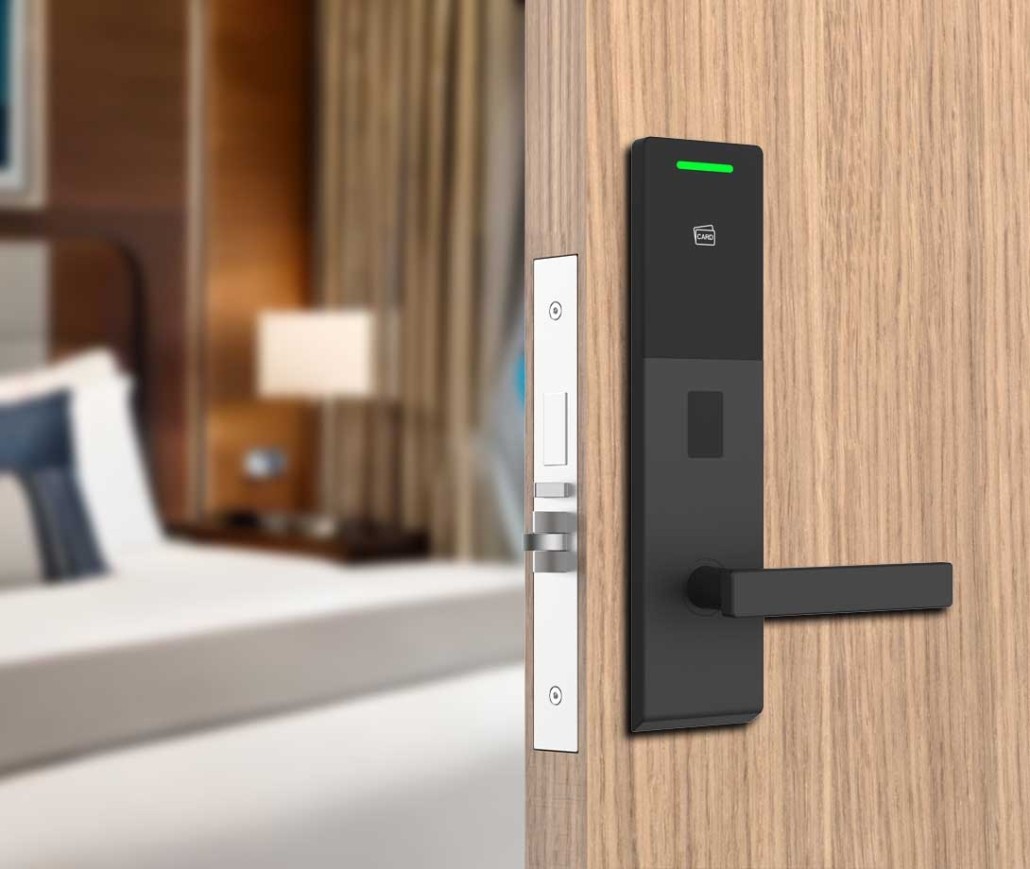In today’s world, convenience and security are top priorities for homeowners and businesses alike. One of the most popular advancements in modern security technology is the keyless door lock. Unlike traditional locks that require a physical key, keyless locks use electronic mechanisms to grant access. But how exactly do they work?
This article will explore the inner workings of keyless door locks, the different types available, their benefits, and potential drawbacks. By the end, you’ll have a clear understanding of whether a keyless lock is the right choice for your needs.
How Keyless Door Locks Function
Keyless door locks operate using electronic authentication methods rather than mechanical keys. Instead of inserting and turning a key, users enter a code, use a fingerprint, tap a keycard, or even connect via a smartphone app to unlock the door.
Here’s a breakdown of the main components and how they work together:
1. The Lock Mechanism
At its core, a keyless lock still has a bolt or latch that secures the door. The difference lies in how this bolt is activated:
- Electric Strike Mechanism: Some keyless locks use an electric strike plate that releases when the correct credentials are provided.
- Motorized Bolt: Others have a small motor that retracts the bolt when the lock is disengaged.
2. The Authentication System
Keyless locks verify identity in several ways:
- PIN Codes – The user enters a numeric code on a keypad. If correct, the lock disengages.
- Biometrics (Fingerprint/Facial Recognition) – Scans unique biological traits to confirm identity.
- RFID/NFC (Keycards or Fobs) – Uses radio frequency signals to communicate with the lock.
- Bluetooth/Wi-Fi (Smartphone Access) – Allows unlocking via an app, sometimes even remotely.
3. The Control Unit (Brain of the Lock)
This is the electronic component that processes authentication requests. It checks whether the entered code, fingerprint, or digital signal matches stored credentials. If verified, it sends a signal to release the lock.
4. Power Source
Since keyless locks rely on electronics, they need power. Most use:
- Batteries (AA or Lithium) – Common in residential keyless locks.
- Hardwired Connections – Some commercial systems connect to building power.
- Backup Options – Many have emergency power inputs (e.g., a 9V battery terminal) in case of failure.
Types of Keyless Door Locks
Keyless locks come in several styles, each with unique advantages:
1. Keypad Locks
- Users enter a pre-set code.
- Some allow multiple codes for different users.
- Ideal for rental properties or shared spaces.
2. Smart Locks
- Connect to Wi-Fi or Bluetooth.
- Can be controlled via smartphone (remote access, temporary codes).
- Often integrate with home automation (e.g., voice assistants).
3. Biometric Locks
- Use fingerprint or facial recognition.
- Highly secure (difficult to duplicate biometrics).
- Common in high-security environments.
4. RFID/NFC Locks
- Use keycards or fobs (common in hotels and offices).
- Quick and convenient but can be lost or stolen.
Benefits of Keyless Locks
1. No More Lost Keys
- Forget about getting locked out or making spare keys.
2. Enhanced Security
- No physical key means no lock picking or unauthorized duplicates.
- Some models alert you of unauthorized access attempts.
3. Convenience
- Grant temporary access to guests or service workers.
- No need to carry keys—just remember a code or use your phone.
4. Modern Integration
- Works with smart home systems (e.g., Alexa, Google Home).
- Can be part of a full security network (cameras, alarms).
Potential Drawbacks
1. Power Dependency
- If batteries die and there’s no backup, you could be locked out.
2. Technical Issues
- Software glitches or connectivity problems may occur.
3. Higher Cost
- More expensive than traditional locks.
4. Learning Curve
- Some users may struggle with setup or troubleshooting.
Are Keyless Locks Right for You?
If you value convenience, modern technology, and added security, a keyless lock is a great choice. However, if you prefer simplicity and don’t want to worry about batteries or Wi-Fi, a traditional lock might suffice.
For most people, the benefits outweigh the drawbacks, making keyless door locks a smart upgrade for homes and businesses.
Would you switch to a keyless lock? Let us know your thoughts!
Post time: Jun-19-2025


